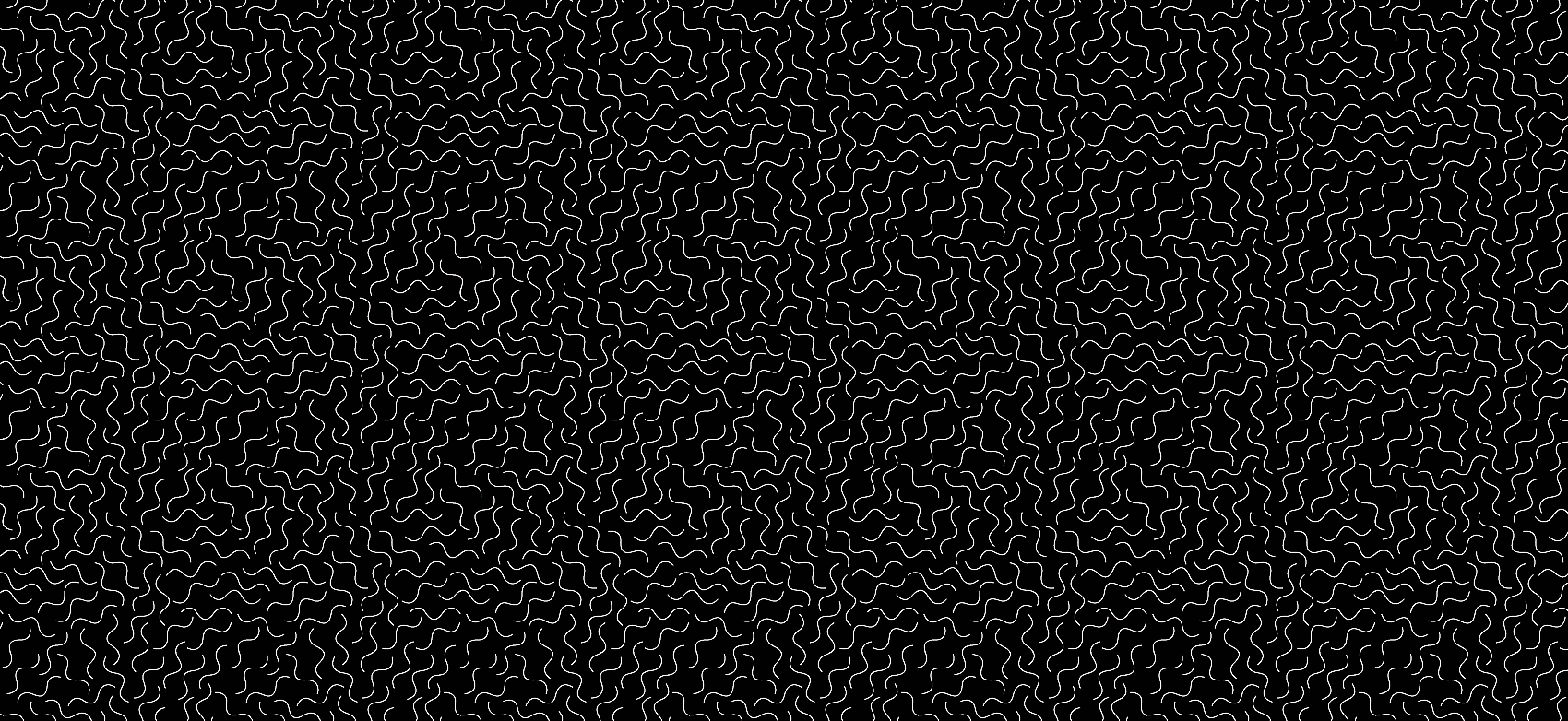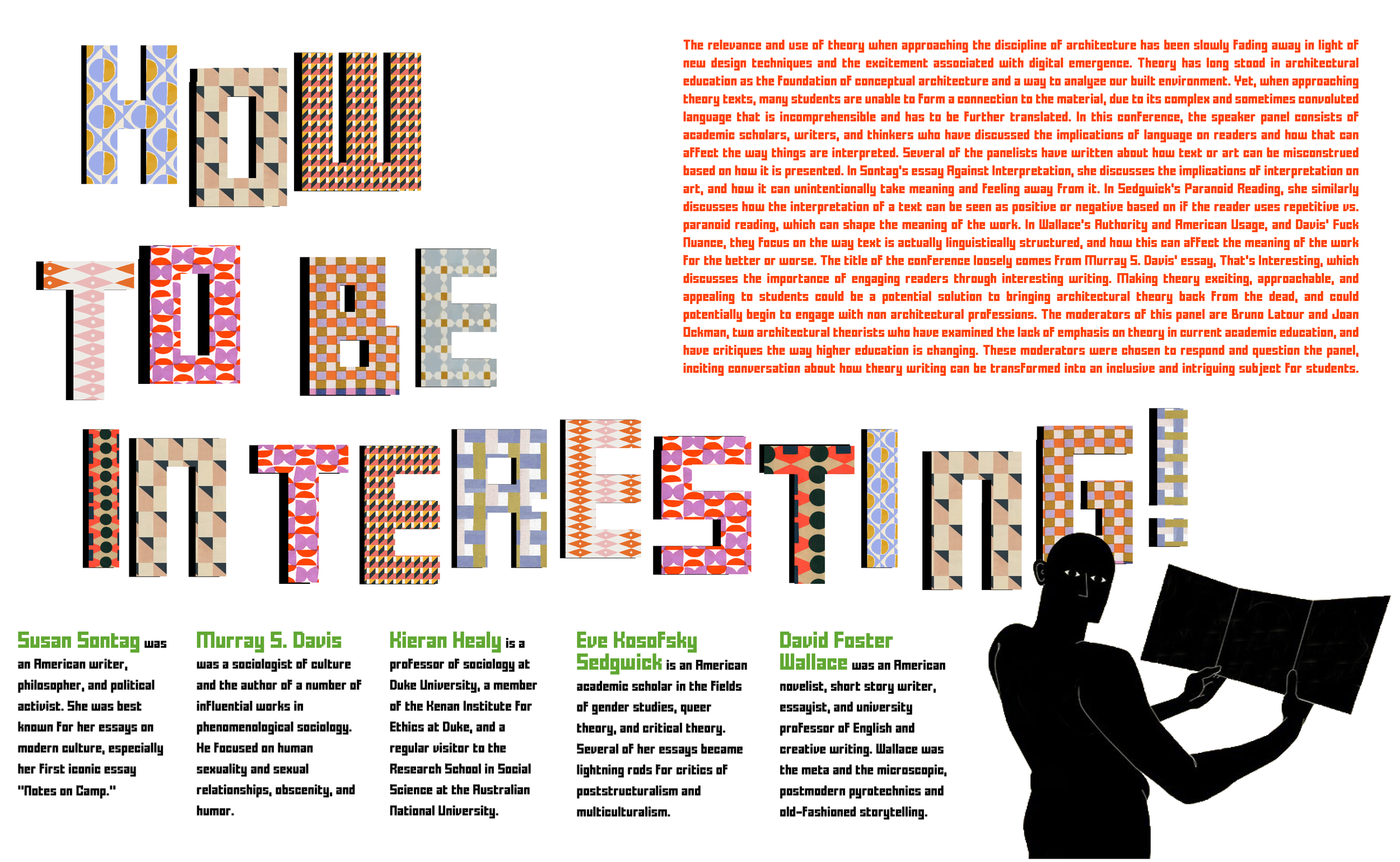
How to be Interesting
This theory assignment was to create a panel of speakers to discuss a topic of choice at a conference. This graphic visually embodies the theme of “How to be Interesting!” by combining bold, geometric patterns with silhouetted figures and the names of influential cultural theorists. The patchwork of contrasting designs reflects the diversity and complexity of thought, echoing how both architecture and language construct meaning. The silhouetted figures suggest introspection and critical engagement, while the playful yet structured typography reinforces the balance between style and substance. By integrating thinkers like Sontag, Sedgwick, and Davis, who have all explored the nature of interpretation and “interestingness,” the piece positions itself as a conversation between disciplines. It doesn’t just illustrate the theme; it performs it, making visual argumentation part of the message.


Taubman College of Architecture // Spring 2023 